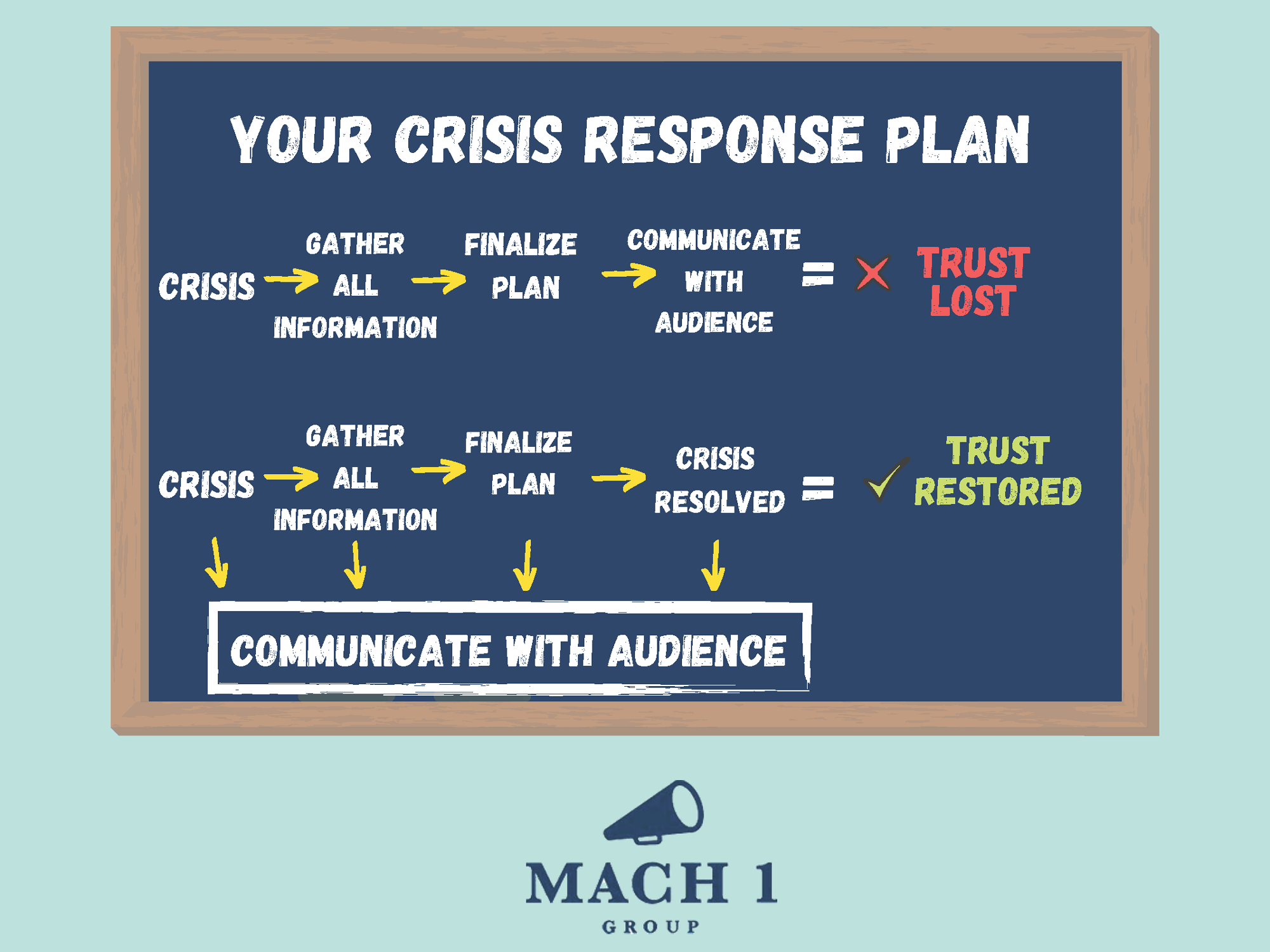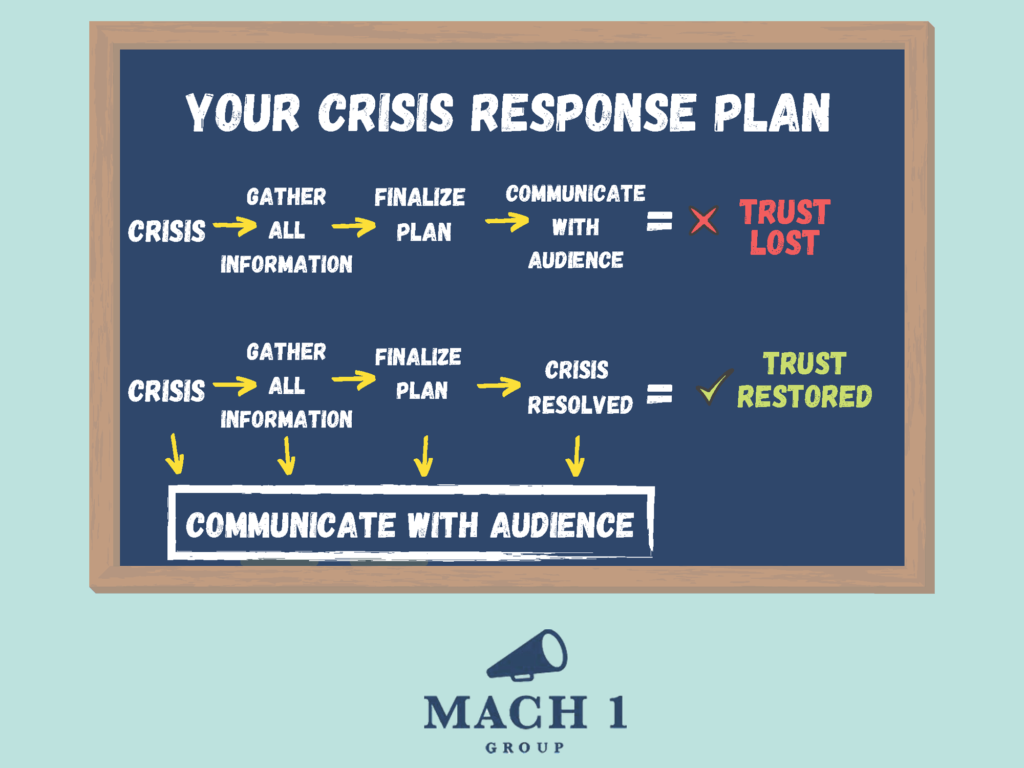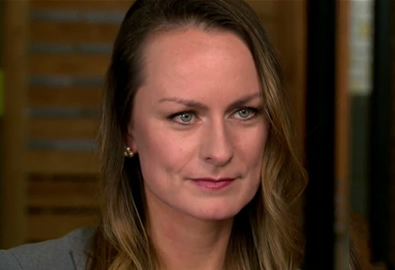
It’s not the crisis that determines your reputation but how you respond to the situation. Small mistakes or the wrong plan of action can have a devastating impact.
Some of the most common risk factors we see during a crisis include:
TIMING: when to inform the public
INFORMATION: what is the right and wrong type of information to share with the public
SPOKESPERSON: it’s not always who is best qualified to speak, it’s who can do it well
Let’s talk more in-depth about just one of those risk factors: TIMING.
In a crisis, organizations may view communications simply as part of the crisis management process and may seek to manage it consecutively, failing to create a separate process that allows it to take place in tandem. While closely aligned, the crisis communications process and the crisis management process must not be allowed to get in each other’s way; rather, they must occur concurrently with close coordination and cooperation.
A common mistake is that many organizations work to gather all available information and finalize a plan before communicating publicly. During this process, they lose valuable opportunities to reassure their audiences, even if the situation is still developing, failing to recognize that a reassuring, if not substantive response, is far better than no response at all.
Constant reassuring communication with your audience makes them feel not only informed but as if they are part of the process. It’s as if you are taking their hand and moving them through the steps along with you, resulting in greater trust and the audience coming to your same conclusions based on the narrative YOU present. If you wait and only communicate when you have all the answers, the public is left to their own story of events and making it harder to regain trust. It’s a lot like a grade school math equation—show your work and receive credit regardless of the correct answer.
The Mach 1 Group has helped dozens of organizations establish a plan of action that takes these risk factors — and more — into account. For more information on how we can help before, during, and after a crisis, CLICK HERE.


